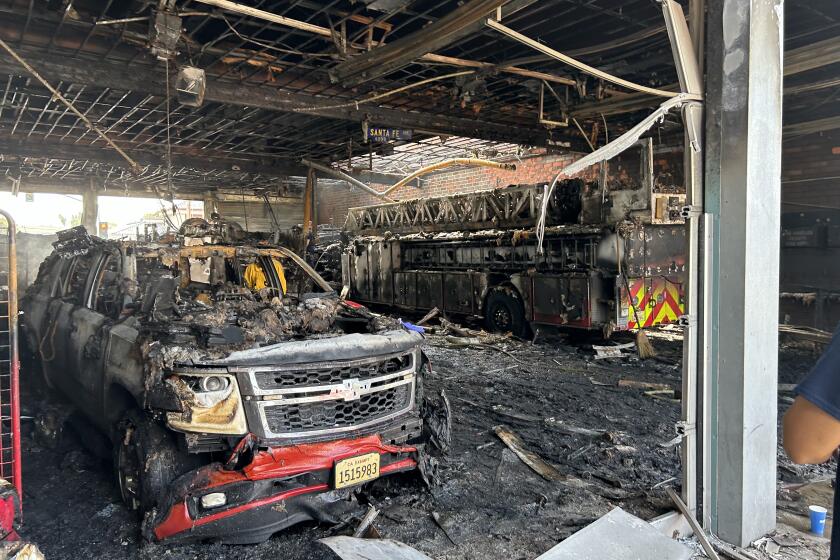It’s Better to Be Loud, and Safe, Than Sorry : When a child is in peril, his or her silence is not golden
The murder of 12-year-old Polly Klaas, whose body was found Saturday, challenges this nation, this state and every community to make our children safer.
The girl was kidnaped from her bedroom during a slumber party at her home in Petaluma, a suburban community north of San Francisco. Police are holding a suspect, Richard Allen Davis, who provided information that led the FBI and local authorities to the body.
Davis is no stranger to the penal system. His extensive rap sheet, which includes two kidnaping convictions, clearly raises questions about why anyone with such a record would be free on parole. Davis had served half of a 16-year sentence. His freedom and subsequent arrest should prompt state lawmakers to re-examine sentencing guidelines and prison policies that allow time off for good behavior for inmates who have a history of violence.
Another troubling drama is continuing in the San Fernando Valley, where a molester is believed to have committed 32 attacks since February against children and young adults. A suspect was arrested last week and remains in custody.
Protecting children against this type of criminal presents particular problems, experts say. In the Valley, for example, it was wrongly believed that heightened public attention would stop the attacks and drive the molester underground. Instead, it now appears that the Valley cases may involve a relatively rare criminal whom experts call an “abducting child molester.” Such a person harbors fantasies that develop over years, eventually progressing to criminal behavior. That process, the authorities say, becomes a dominant force that overrides fear of capture. In other words, this type of criminal usually will not stop until he is captured.
When a series of attacks begins, it is vitally important for police and school officials to share information, and for both to work closely with parents to help children get to and from school safely.
Youngsters can also be taught to seek help, defend themselves and take evasive actions. Well-mannered children generally are taught not to make a lot of noise and often are rewarded for being quiet in the presence of adults. They must do otherwise when danger looms; they must scream and make a scene without fear of being rude or embarrassed. As self-defense instructor Ellen Snortland wrote for the Times Op-Ed page, fearful children should yell “911!” or “I need help!” Better to insult someone who turns out to be harmless than to be assaulted.
Schoolchildren should walk in groups. A youngster who forgets a book, homework or lunch should not be penalized for not walking back home alone. Some teachers will object to excuses of this sort, but in this fearful climate children need every encouragement to put safety first.
Street-smart girls learn early to lessen the risk of being trapped by not sitting on the inside seat in a bus. They learn to cross the street when they are approached by strangers. They learn to duck into a store if they believe someone is following them. Nowadays, both girls and boys must be taught these precautions.
Polly Klaas almost certainly could have done nothing to thwart an abductor who was armed with a knife and who appeared without warning. However, her murder may stand as a valuable, cautionary legacy for all children: Better to be loud, and safe, than sorry.
More to Read
Start your day right
Sign up for Essential California for news, features and recommendations from the L.A. Times and beyond in your inbox six days a week.
You may occasionally receive promotional content from the Los Angeles Times.






